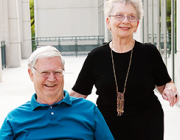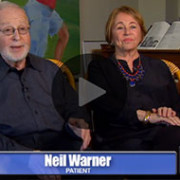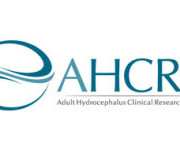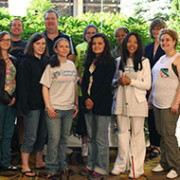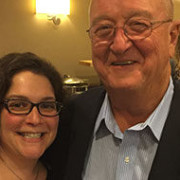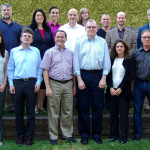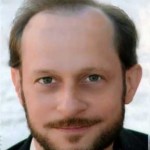Bringing Normal Pressure Hydrocephalus Out of Obscurity
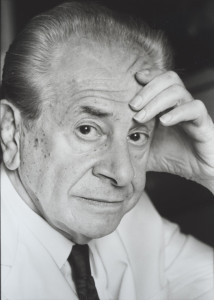 In the 1960s, a treatable form of neurodegeneration or dementia, was a controversial claim. Most clinicians did not believe that such conditions could be reversed surgically by diverting excess of cerebrospinal fluid (CSF) in the brains of affected patients using a shunt. Dr. Salomon Hakim’s background in neurology, neurosurgery, and neuropathology along with his mechanical expertise and intrinsic curiosity enabled him to formulate and present his hypothesis on Normal Pressure Hydrocephalus (NPH) 50 years ago, this year. He questioned things that others were simply content to accept, to take the NPH puzzle out of autopsy labs and relative obscurity and to bring it into the real world as a clinically diagnosable and, more importantly a treatable syndrome. Even after many decades of clinical and scientific study on this subject, Dr. Hakim’s story remains largely untold and, unfortunately, many people suffering from this condition remain misdiagnosed or undiagnosed by the general medical community. We invite you to learn more about Dr. Salomon Hakim and the medical syndrome and patients he dedicated his life to, namely, those living with Normal Pressure Hydrocephalus.
In the 1960s, a treatable form of neurodegeneration or dementia, was a controversial claim. Most clinicians did not believe that such conditions could be reversed surgically by diverting excess of cerebrospinal fluid (CSF) in the brains of affected patients using a shunt. Dr. Salomon Hakim’s background in neurology, neurosurgery, and neuropathology along with his mechanical expertise and intrinsic curiosity enabled him to formulate and present his hypothesis on Normal Pressure Hydrocephalus (NPH) 50 years ago, this year. He questioned things that others were simply content to accept, to take the NPH puzzle out of autopsy labs and relative obscurity and to bring it into the real world as a clinically diagnosable and, more importantly a treatable syndrome. Even after many decades of clinical and scientific study on this subject, Dr. Hakim’s story remains largely untold and, unfortunately, many people suffering from this condition remain misdiagnosed or undiagnosed by the general medical community. We invite you to learn more about Dr. Salomon Hakim and the medical syndrome and patients he dedicated his life to, namely, those living with Normal Pressure Hydrocephalus.
Who was Salomon Hakim, M.D., Ph.D.?
By Carlos Hakim, Ph.D., and Marvin Sussman, Ph.D.
Salomon Hakim, the oldest of seven children, was born to Sofia Dow and Jorge Hakim in 1922 in the port town of Barranquilla, Colombia. Hakim’s parents emigrated from Lebanon in 1921, by way of Cuba, and finally to Colombia; first to the port town of Barranquilla where Salomon was born, and then to Ibague where they established their home and where the senior Hakim owned a fabric shop. The young Salomon was a happy and curious child; he loved to investigate how things worked. His father fostered and encouraged this curiosity in his son, providing tools and parts so that he could build things that interested him. At age 11, Hakim was sent to study at San Bartolome, a Catholic boarding school in Bogota, about 4 hours away from his family. Putting his curiosity, creativity, and problem-solving skills to work, Hakim built a radio that allowed him to keep in daily contact with his family.
While pursuing his studies, his science teacher, a physicist and Jesuit priest, encouraged the young Hakim to study physics. From early on, however, Hakim wanted to become a physician and went on to study medicine at La Universidad Nacional, specializing in neurology. This seemed fitting with his familial roots, as the Hakim family name means “doctor” or “wise man” in Arabic. When he graduated summa cum laude from medical school in 1948, the state medical education in Colombia lagged behind other areas of the world. Hakim traveled to the U.S. where he met Dr. Gilbert Horrax, head of the Neurosurgery Department at Lahey Clinic in Boston. Dr. Horrax was a pioneer in neurosurgery and a founding member of the Society for Neurological Surgery. He agreed to mentor Hakim if he improved his English, which he did.
In 1950, Salomon Hakim and Yvette Daccach were married in Colombia. A first-generation Colombian, Yvette’s family had also emigrated from Lebanon. Shortly after they got married, the couple went to live in Boston while Dr. Hakim did his neurosurgical fellowship and neurological training at the Lahey Clinic under Dr. Horrax and Dr. James L. Poppen. Their daughter, Marie Claire, and son, Carlos, were born during this time. The two younger sons, Fernando and Rodolfo, were born in Colombia after the Hakim’s returned briefly. In 1954, Hakim became a fellow at the Massachusetts General Hospital (MGH) in neurosurgery and neuropathology, so the family returned to Boston. He was also a research fellow in neurosurgery and neuropathology at Harvard Medical School with Drs. Raymond D. Adams and Miller C. Fisher.
Planting the Seeds of the NPH Hypothesis
The cases that served as the seeds that would germinate into Dr. Hakim’s formulation of the NPH hypothesis were planted in December 1957. While working at the San Juan de Dios Hospital in Bogota, Colombia, a 16-year-old boy had been brought in to the hospital after being struck by a car while playing ball in the street. After surgery to remove a hematoma, the boy remained unresponsive, being diagnosed with irreversible brain damage. After two weeks, the boy was sent home in a near comatose state. A month later the boy was brought back to the hospital, his condition unimproved. Now incontinent, he was almost always drowsy, or asleep. Dr. Hakim, the neurologist on duty, observed ventricular enlargement on X-ray. He removed 15ml of cerebrospinal fluid (CSF) from his ventricles for testing. The next day, the boy began talking after being unresponsive for over a month. This was nothing short of a miracle. A few days later the boy lapsed back into unresponsiveness; Dr. Hakim again removed CSF from the boy’s brain. Hakim then implanted a shunt to allow for the continued CSF drainage. The next day, the boy began talking again. Five days later the boy was no longer incontinent and was eating on his own. Within 3 months, the boy’s speech returned to normal and he went back to school. Dr. Hakim later wrote in his case report, “One of the residents had stated that he could not see the reason for the improvement in the patient after the removal of the cerebrospinal fluid (CSF) and the lowering of the CSF pressure since his pressure had been normal. This was the moment when we thought that a possible explanation could be based on the relation between the CSF pressure and the area on which it is exerted.”
A second case soon presented another opportunity for Dr. Hakim to test his hypothesis. In February 1958, a 52-year-old man, a musician, was brought to the hospital by his wife. He was a professional trombone player who, for the past year, had been unable to play his instrument as well as he had played previously. His legs stiff, his balance unsteady, he had trouble turning, and could not climb stairs. He also exhibited cognitive and urinary impairment consistent with what would come to be known as the Hakim triad for NPH. (Gait disturbance is the first of the triad of symptoms to appear in all classic NPH cases and it was the first sign to present in this case. Some patients describe the feeling that their feet are glued to the floor causing them to walk with a shuffle.) The patient tired easily, was apathetic, and careless in his appearance. X-ray images revealed ventricular enlargement. Spinal CSF drainage caused his symptoms to improve. Six weeks later a shunt was implanted. The next day the patient had remarkably improved.
“Many patients without the hope [of a cure] can be rescued from their dementia through a ventricular drainage if they, indeed, have this kind of hydrocephaly,” wrote Hakim about his discovery. “In this way we can propose the birth of a new chapter in neurosurgery — that of treatable dementias.”
Putting the Pieces Together
The Hakims returned to Boston and, for the next 7 years, Dr. Hakim worked as a research fellow in neuropathology at MGH where he performed autopsies on cases with Alzheimer’s and other neurodegenerative diseases. During this period, Hakim saw many cases of ventricular enlargement with loss of brain matter, the classic presentation of dementias. Occasionally, he observed patients who had died suffering from dementia with ventricular enlargement but without loss of brain matter. This is a characteristic sign of NPH, but Hakim didn’t know it at the time. As he continued to find more of these cases, he tried to make sense of these observations.
The epiphany came when the Hakims were setting up for the first communion party of their oldest son, Carlos. In fact, it was when Dr. Hakim was blowing up balloons that the answer came to him! After overcoming the initial resistance of blowing up the balloon, the balloon inflated easily and the balloon volume increased several fold. The surface area of the inflated balloon increased significantly. If the ventricles followed a similar pattern, the significantly enlarged surface area would exert significant forces on brain tissues despite the fact that the pressure would be nearly normal.
Publication of the Thesis on NPH
On March 10, 1964, Dr. Hakim published his first thesis in Spanish on NPH, “Some Observations on C.S.F. Pressure. Hydrocephalic Syndrome in Adults with ‘Normal’ C.S.F. Pressure — Recognition of a new Syndrome.” Hakim drew upon the work of a 17th century mathematician, physicist and philosopher, Blaise Pascal, to explain the mechanism of NPH development.
“We believe that the brain impairment in hydrocephalus with normal C.S.F. pressure can be explained by Pascal’s Law,” wrote Hakim. “First stated 300 years ago, this law says that: When a pressure is applied on a certain area of a confined liquid, the pressure is transmitted without gain or loss to each similar area within the vessel.” In this thesis, he presented his hypothesis using a series of photographs of balloons, arteriograms of actual cases, and diagrams illustrating the application to NPH of Pascal’s Law, correlating these with cross sections of brains of similar pressures with different sized ventricles. Dr. Hakim described the details of his first clinical cases — the boy hit by a car and the trombone player, and several other similar cases he had treated since the first two cases. Shunt implantation had given these patients back their lives. This work also earned Dr. Hakim a Ph.D. in neuropathology.

